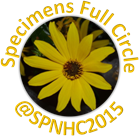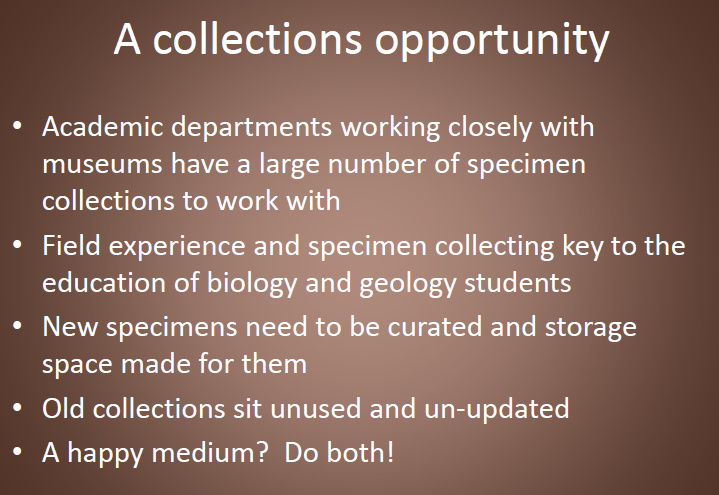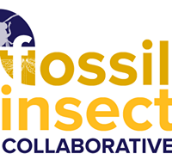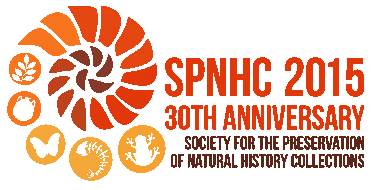 An overview. from Deb Paul, Dena Smith, and Vlad Blagoderov
An overview. from Deb Paul, Dena Smith, and Vlad Blagoderov
Summary.
Twenty-six presenters at the #SPNHC2015 Symposium: Specimens Full Circle (SFC): Collection to Digitization to Data Use discussed various parts of the specimen data pipeline including: collecting, digitization, research use of the data and images, and figuring out how to manage digitization. It was great to see so many of you able to join us in person, and remote via Adobe Connect. There were lots of talks at SPNHC 2015 covering components of collections digitization! It’s inspiring to see this community momentum. I’ve just touched on a few of the SFC talks here – and encourage you to have a look at the wiki for more inspiration.
Looking for ideas for research?
Four students joined us to present the work they are doing with specimen and image data. Derek Woller (Graduate Student, Texas A & M) introduced us to how he is using specimen data to study the “scrub-lovin’ grasshoppers” (Orthoptera: Arcrididae: Melanoplus: The Puer Group). If you were on the Thomas Farm and Ichetucknee Fossil Field Trip – you’ll remember Derek as our amiable entomologist educator for our adventure. Thanks Derek! In addition to fossils, he also found some extant Melanoplus grasshoppers at the Thomas Farm site. At last check in iDiBio, we have some 31K Melanoplus specimen records.
Lindsay Walker (Graduate Student, University of Colorado) showed us how she’s Putting Our [Fossil Insect] Images to Work: Using Digitized Fossil Beetles to Study a Global Climate Transition.
From a plant perspective, Heather Dame (Graduate Student, Central Michigan University) highlighted the difference the specimen data in small collections makes in ecological niche-modeling in her talk: The contribution of small collections: A case study for Fuireneae (Cyperaceae). Speaking of small, if you’ve got a small collection, lucky for you there’s SCNET. And what about biodiversity? iDigBio Post Doc, Charlotte Germain-Aubrey (et al), showed us the power of mining aggregated museum data to address what might be happening  with Florida plant diversity in the future.
with Florida plant diversity in the future.
Evan Anderson (Graduate Student, University of Colorado) brought us Something Old, Something New, Specimens Borrowed And Published Too: Integrating New Specimens And Old Collections Into Research.
What about species associations across kingdoms? Daryl Lafferty (Arizona State University) enticed us with compelling research being done with herbarium data to illuminate species associations. Daryl gave us just a brief glimpse of how animal data might also be added to enhance species associations research in Mining Herbarium Databases to Discover Plant Species Associations in Central Arizona.
If you’d like to hear a talk again, or if you missed SPNHC 2015, head over to the wiki to review all the presentations and recordings.
Citizen scientists, students, and 21st century biodiversity informatics skills.
Are you interested in new developments to incorporate citizen scientists into our worldwide specimen data digitization and imaging efforts? Libby Ellwood, Post Doc at iDigBio, reviewed what’s currently possible and invited everyone to participate in WeDigBio in her talk: Accelerating Digitization of Biodiversity Research Specimens through Online Public Participation. Wondering how citizen scientists might support a large-scale digitization effort in the next 4 years? Find out more in An Update on the Notes From Nature Project: Bringing A Proof Of Concept Into Full Production, from Michael Denslow (Notes from Nature, and the SERNEC TCN). Emily Gillespie (Marshall University), shared the challenges and rewards of her efforts to involve students in digitization. Maybe you’re wondering just what she learned? See: Inclusion of botany-naïve undergraduates in digitization workflows: it is possible!
What about the skills needed in the 21st century to support reproducible research? We all need faster access to the data, no matter where we are in the data pipeline from collection to accession to mobilization and publication. What happens when the dataset is so large, you can’t open it in a spreadsheet anymore? Learn more about current trends in Providing Computing Skills For The Next Generation Of Biodiversity Scientists (François Michonneau, University of Florida).
In The New and Improved Armchair Botanist, Richard Rabeler (University of Michigan), offered us his considered view on how collecting and research are changing with the advent of massive digitization efforts to create fast, easy access to huge amounts of data. Rich, we’re glad you can get to more data, and get to it faster. Seems one draw-back to all this easily available data has resulted in a side-effect of getting out less. Something to think about.
More specimen uses, more access, and collaboration for new and richer data.
What collaborations are making new data possible? What about data visualization and taxon concepts? How reliable is the color captured in digital images? How does digitization and imaging fit into a curatorial workflow? What models are there for managing these large digitization projects? What can we do with high resolution images? What’s been added to the OCR and NLP toolkit inside Symbiota? How is digitization supporting tissue discovery to aid endangered species? What's happening in Europe in digitization and project management? Check out these talks on these topcis and more on the wiki.
-
The Utility of Accessioned Collections for Conservation Management of Endangered Species (Samantha Wisely)
-
The digital roundabout: data flow from field project to archive to new project (Ann Molineux)
-
Biodiversity Information Serving Our Nation (Bison), The Integrated Taxonomic Information System (ITIS) and the Federal Ecosystem of Biodiversity Data (Gerald Guala)
-
Taxonomic concept resolution for voucher-based biodiversity information platforms (Nico Franz)
-
Specimen label digitization using OCR/NLP tools integrated within the Symbiota processing toolkit (Edward Gilbert)
-
The Processes, End Uses and Unexpected Bonuses of High Resolution Imaging of Entomology Collection Items (Peter Lillywhite)
-
Mobilizing Fossils for Global Change Research (Pat Holroyd)
-
Integrating Imaging into Curatorial Workflows (Talia Karim)
-
A picture is worth a thousand words: imaging in digitisation workflows (on figshare) (Vladimir Blagoderov)
-
Inselect: an innovative tool for automating digitisation of natural history collections. (on figshare) (Laurence Livermore)
-
Digital Collections Programme: A structured approach to mass digitisation (on figshare) (Ben Atkinson)
Many thanks from the conveners. We hope you've found some new ideas here and some potential research colleagues. Please think about SPNHC 2016 now! The theme is any aspect of – Sustainability. We need to address the long view. Sustaining:collecting, physical objects, digital records, digitization efforts, update of digital data, knowledge of best digitization practices, and efforts to update biodiversity informatics skills in collections. We are wondering how we’ll fit in all the digitization talks next year. Here's to Berlin, and SPNHC2016.











